Last-Minute NYC Holiday Gift Guide 🎁
We’ve created a holiday gift guide with presents for the intrepid New Yorker that should arrive just in time—


Every so often, when the tide rolls out or a big storm rolls through, a scattering of peculiar faces pop up out of the sand in Brighton Beach, Brooklyn. The origin of these mysterious, sometimes ecclesiastical, and almost ancient-looking figures is a puzzle that has perplexed Tricia Vita, administrative director of the Coney Island History Project, for more than a decade. Now, she finally has an answer about where the stone faces of Brighton Beach came from.
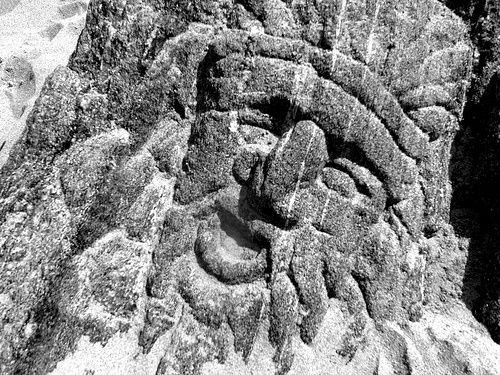
In a newly published oral history, Vita reveals the man behind the mysterious stone carvings. Vita first discovered the stone faces of Brighton Beach in a photograph on Twitter in 2010. Not knowing where to find them, she sent her friend, photographer Bruce Handy, out on a scouting mission. After an entire summer spent combing the beaches of Brighton and Coney Island, he was able to locate five different sculptures. Another photographer friend of Vita’s, Jim McDonnell added his own piece to the puzzle. In 2022, McDonnel came across photographs of carvings that were featured in an old Nabi Gallery exhibit. The sculptures, which were created by a Brooklyn-born artist, looked very similar to those found on the beach, he thought. After giving the tip to Vita, she was able to confirm that the artist was responsible for the stone carvings, and over a decade of wonder closed with a happy ending.
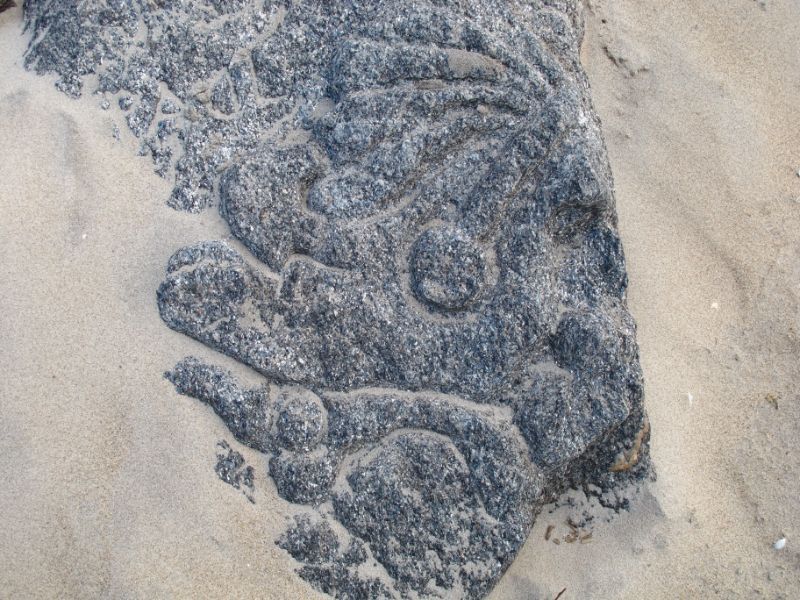
The artist who brought Brighton Beach’s Easter Island-like sculptures to life was Bensonhurst-born painter and sculptor John Philip Capello. Capello always had an affinity for the arts and would often accompany his older brother, Luciano, on trips to churches around New York City where Luciano would work on restoration projects. Starting as a painter, Capello says he turned to sculpture because it allowed him to use both hands and both sides of his brain, both the logistical and creative sides. The brothers and their friends spent a lot of time on Brookyln’s beaches. They were always sketching or playing chess or just enjoying the scenery. In the 1970s, a new inspiration struck.
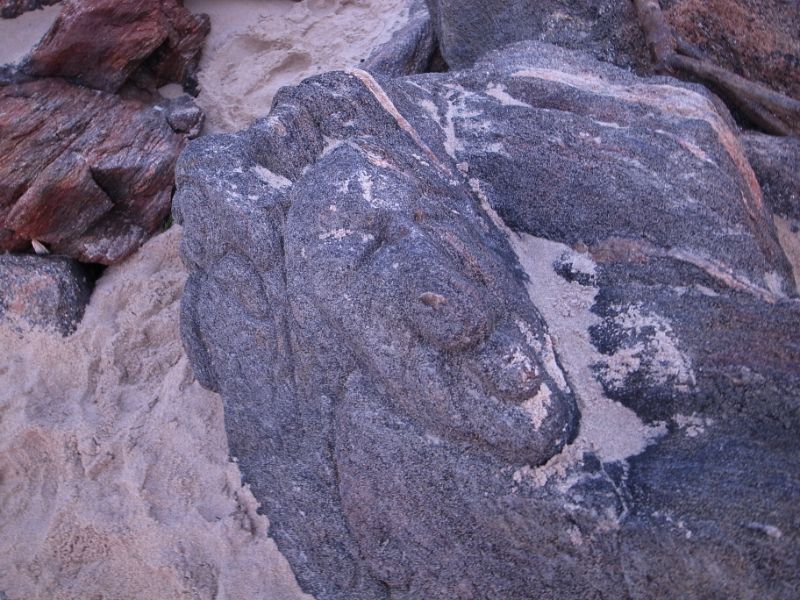
“We saw the images ahead of time,” Capello explained to Vita in the oral history, “We looked into the stones and saw what we wanted to see: a nose, an eye socket, a place to put a mouth or chin, you know that’s already there, but just take away the stone that didn’t belong.” Using various hand tools, Capello, his brother Luciano, and sometimes a couple of friends, set to work freeing the faces they saw from the stones. Capello got a kick out of carving wide open mouths in the faces that would fill with water as the tide rolled in. They worked during low tide when the rocks were exposed and then let their creations become submerged when the tide rolled back up.
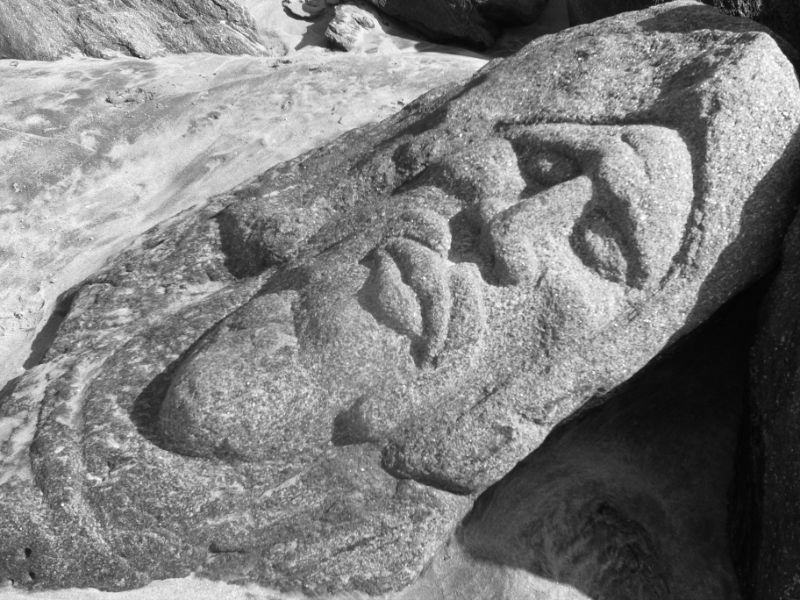
The figurative sculptures vary in style, level of completeness, and amount of erosion. They can also be interpreted in many ways. One sculpture with a beard and long hair that Capello says was modeled after the God of Neptune, Vita said her friends call “Jesus of Brighton.” John says that specific sculpture was the handiwork of his brother.
These sculptures weren’t done quickly over the course of a leisurely afternoon at the beach. They required multiple visits and lots of muscle. Capello explained that the stone found at the beach isn’t what a sculptor would typically use for carving. It’s much harder and more difficult to break away and chisel. “We were just doing it for ourselves to pass the time,” Capello said when Vita asked if there was any media coverage of the sculptures at the time of their creation. Oftentimes, people will sit on the rocks, completely unaware of the face peering up at them.
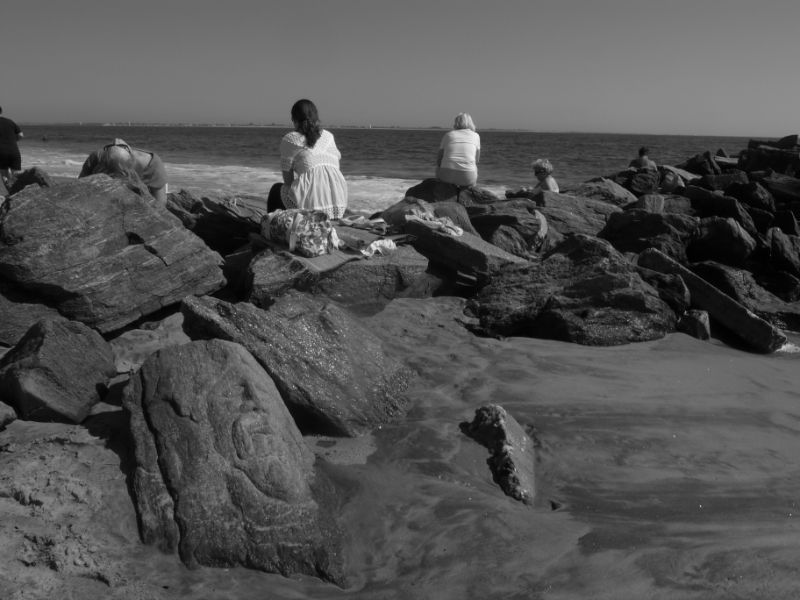
When asked if he has done any beach carving since his Brighton days back in the 1970s, Capello said yes, sort of. Capello moved to Sag Harbor in the 1980s. It was in this new town that he was struck by inspiration at the beach once more. However, this time, while in the process of bringing a new work to life, he was stopped. Somewhere, there are the early signs of what could have been.
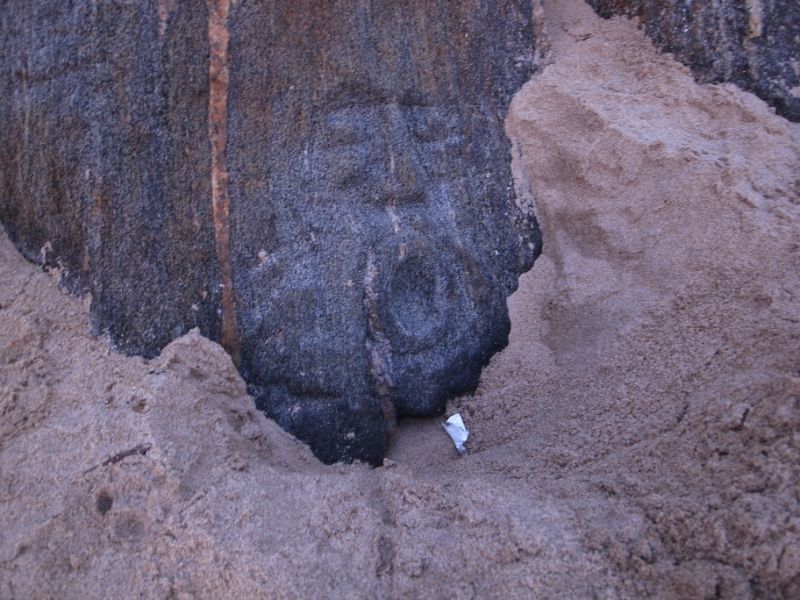
While time and water have worn down some of the faces on the beach, others are still clearly visible. Even though the mystery of the stone faces of Brighton Beach is solved, it is still a rewarding quest to hunt them down for yourself on a trip to the beach. Capello still makes sculptures today. “I’m like a painter, but the paintings will perish. The stone last. You leave a legacy,” Capello said. You can listen to the full interview with John Philip Capello here.
Next, check out 27 Secrets of Coney Island
Subscribe to our newsletter